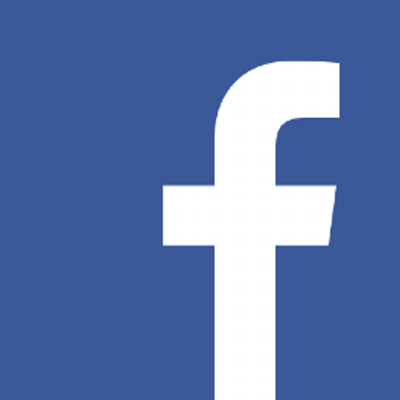Stat Watch: Social Media's Impact on Customer Service

by Peter Devereaux
03 Jul, 2017
Facebook is forcing brands' digital hands when it comes to app-based customer service thanks to some recent innovations that could shape consumer expectations in the future.
The social media network reports that more than 2 billion messages are already sent between people and businesses every month within its Messenger app, including both automated and people-initiated messages. As such, there are numerous instances of brands making good use of the channel.
Last fall, for instance, beauty brand Sephora launched Sephora Assistant - a Messenger bot to book makeovers at locations around the U.S. Since then, the company reports an 11 percent higher book rate through the offering, which requires five fewer steps to book a makeover (three steps versus eight or more with other booking channels).
Facebook can certainly cite this instance as a win for business use of Messenger and companies need to take notice of how competitors are leveraging the capabilities. Messenger bots, for instance, are being used as travel assistants, order help and personalized news delivery (read more at wsm.co/botexamples).
The most-popular social network (Facebook) is paving the road for app-based business and consumer communication not only on its primary network but Instagram as well - recently releasing its click-to-Messenger advertising format on Instagram. According to Facebook, when someone clicks on an Instagram click-to-Messenger ad, it opens a conversation with the business. The user will be sent the company's Messenger content, which includes all the text, image and videos that were set up during ad creation.
As the device maker often housing these apps, however, Apple is not looking to be left behind. It is releasing Business Chat within iMessage to rival Facebook Messenger (read more at wsm.co/ichatnow).
(Twitter, 2016)
The social media network reports that more than 2 billion messages are already sent between people and businesses every month within its Messenger app, including both automated and people-initiated messages. As such, there are numerous instances of brands making good use of the channel.
Last fall, for instance, beauty brand Sephora launched Sephora Assistant - a Messenger bot to book makeovers at locations around the U.S. Since then, the company reports an 11 percent higher book rate through the offering, which requires five fewer steps to book a makeover (three steps versus eight or more with other booking channels).
Facebook can certainly cite this instance as a win for business use of Messenger and companies need to take notice of how competitors are leveraging the capabilities. Messenger bots, for instance, are being used as travel assistants, order help and personalized news delivery (read more at wsm.co/botexamples).
The most-popular social network (Facebook) is paving the road for app-based business and consumer communication not only on its primary network but Instagram as well - recently releasing its click-to-Messenger advertising format on Instagram. According to Facebook, when someone clicks on an Instagram click-to-Messenger ad, it opens a conversation with the business. The user will be sent the company's Messenger content, which includes all the text, image and videos that were set up during ad creation.
As the device maker often housing these apps, however, Apple is not looking to be left behind. It is releasing Business Chat within iMessage to rival Facebook Messenger (read more at wsm.co/ichatnow).
Regardless of company, all of these messaging apps are establishing expectations for quick, personalized and automated service.
12%
The average brand response rate to consumer inquiries, across industries, is 12 percent on social media, and it takes companies an average of 11 hours to send replies - a one-hour increase from the average response time in Q2 2016. The industry with the highest response rate (the percent of consumer messages needing a response that actually receive one) is retail (19 percent), while the industry with the lowest response rate is the media/entertainment sector (7 percent).(Sprout Social, 2017)
35.3%
Respondents aged 18-34 have used social for customer service more than any other age group (35.3 percent) - and if they hadn't yet, were most likely to do so in the future (37.7 percent).(Conversocial, 2016)
15
To obtain a "very responsive" badge on its Facebook profile, a business Page must have achieved both of the following over the last seven days: a response rate of 90 percent and a response time of 15 minutes.
(Facebook, 2017)
3-20%
When a customer Tweets at a business and receives a response, they are willing to spend 3-20 percent more on an average priced item from that business in the future.(Twitter, 2016)

Peter Devereaux
As the Editor-in-Chief of Website Magazine and President of Website Services, Peter has established himself as a prominent figure in the digital marketing industry. With a wealth of experience and knowledge, Peter has been a driving force in shaping the landscape of digital marketing. His leadership in creating innovative and targeted marketing campaigns has helped numerous businesses achieve their revenue growth goals. Under his direction, Website Magazine has become a trusted source of information and insights for digital marketers worldwide. As President of Website Services, Peter oversees a team of talented professionals who specialize in SEO/SEM, email marketing, social media, and digital advertising. Through his hands-on approach, he ensures that his team delivers exceptional results to their clients. With a passion for digital marketing, Peter is committed to staying up-to-date with the latest industry trends and technologies, making him a sought-after thought leader in the field.
Subscribe to Our Newsletter!
Latest in Social Media










